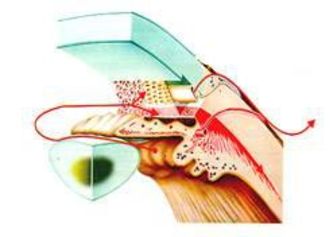Glaucoma (Eye Pressure)

Glaucoma, commonly known as blackwater disease, is a common eye disease affecting millions of people. If left untreated, it can cause vision loss. In glaucoma, the fluid pressure inside the eye is high to the point of damaging the optic nerve, which is essential for vision. Glaucoma, which often occurs over the age of 40, does not show any symptoms in the majority of patients. In the early stages, some patients experience symptoms such as headaches in the morning, occasional blurred vision, circles around the light at night and pain around the eyes when watching television.
Glaucoma can be detected by many patients only at an advanced stage, when there is a significant loss of vision. A family history of glaucoma, advancing age, diabetes, myopia, long-term cortisone treatment, eye injuries and migraine increase the risk of glaucoma.
Another type of it is narrow-angle glaucoma, which occurs suddenly in a crisis at an advanced age. It is characterized by severe eye pain, decreased vision, redness of the eye, nausea and vomiting. It requires urgent treatment. In the types observed in infancy and childhood, watery eyes, sensitivity to light and enlargement of the eye are observed.
Early diagnosis is important in glaucoma as once vision loss occurs, it is irreversible. An abnormal increase in intraocular pressure detected during a normal eye examination can be the first sign of the disease. Regular examinations by an ophthalmologist are the best way for early diagnosis and treatment of glaucoma. Glaucoma is diagnosed with a careful eye examination. In a diagnostic eye examination, the ophthalmologist
Measures intraocular pressure with an instrument called a thermometer. Examines the optic nerves by examining the eye bottom. will perform a visual field test to determine if there is a loss of visual field, if deems necessary. may perform further tests that examine the visual nerve and nerve fiber layer, such as RNFL NFA or HRT.
How is Glaucoma Treated?
Once diagnosed, glaucoma cannot be completely cured or eliminated, but in many cases it can be successfully kept under control with appropriate treatment and progression of vision loss can be prevented. Open-angle glaucoma is primarily treated with various medications that lower intraocular pressure. Surgical treatments can be applied in resistant cases or depending on the type of glaucoma. More than one surgical intervention may be required in some patients. Treatment is very urgent in the narrow-angle type that occurs with a crisis. Laser treatments can be used for alternative or uncontrolled glaucoma and closed-angle glaucoma.
